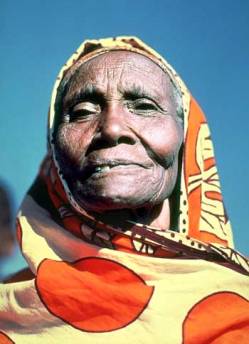|
|
The Human Cost of Tourist Dollars
Refugees International
Ethiopia
January 2005

Visiting Nechasar Park, Refugees International (RI) met a number of local people who said that they had been forced off their land earlier this year so that the park can be fenced and tourist facilities developed. They said that they did not receive any compensation for the lands they lived on for many years and little assistance of any kind. Moreover, the land to which they were moved outside the boundaries of the Park is already occupied. A bridge and road to their new homes was washed out by a flood, cutting them off from access to health facilities, schools, and other social services. The planned fence around the park will also separate them from the town of Arba Minch, already a long day's walk away.
On the other side of the fence will be 980 Kore farming families and 1,025 Guji Oromo pastoral families - a total of about 10,000 people and their livestock - who have long lived inside the boundaries of the park or used its lands. If present plans for the Park are implemented, fishermen on Lake Chamo and local families who gather firewood will also have their precarious livelihoods disrupted.
Nechasar National Park was established in 1962. It is a small (514 km2), undeveloped, and beautiful park with enormous tourism potential. In February 2004 the Ethiopian government signed a contract with the African Parks Foundation of The Netherlands as the concessionaire to manage the Park. The Southern Nations, Nationalities and People's Regional State (SNPRR) will oversee the implementation of the contract. Among the plans for the Park are an electric fence and the reintroduction of rhinoceros, elephant, and other species of interest to tourists. The park was originally established to protect Swayne's Hartebeest, an endemic species in danger of extinction. Tourist accommodations will be built, and tourists will be guided around a pristine natural environment devoid of Ethiopians.
The African Parks Foundation claims on its website that it "takes responsibility of important areas of biodiversity in Africa, always with the inclusion of local communities" including "the integration of flora and fauna and poverty relief." A letter from the Foundation to RI states that "African Parks has no involvement in the relocation of these recent settlers." However, the Foundation's website claims that the relocation of the people within the park "has been negotiated, and is being undertaken with the consent of the people involved." This statement is at variance with what we were told by former residents of Nechasar.
Ethiopia is one of the poorest and most food insecure countries in the world. One of the government's responses to chronic hunger among millions of its people has been a large resettlement program which encourages the movement of people from overcrowded to less crowded areas with a promise of aid and social services. The resettlement program is controversial, but it offers the right of return to those who are not satisfied with their new homes - an option the people expelled from Nechasar do not have. In the case of the 10,000 people of Nechasar, moreover, there was no pretence of voluntary movement and apparently little government assistance provided to them. While the development of the Park may provide employment and economic opportunity in the distant future, the need to assist the relocated people is now.
It is a cruel irony that --- in a time of chronic food insecurity in Ethiopia --- people have been forced from land on which they depend for their only livelihood. People and parks should not be incompatible and tourist dollars for the government and the African Parks Foundation should not be earned on the back of such suffering. A sustainable future for conservation lies in developing incentives for local communities to conserve and manage their own environments, not in increasing the suffering of people who already have few opportunities to build secure futures for themselves and their children.
Refugees International therefore recommends that:
· The regional and national governments of Ethiopia, the African Parks Foundation, and independent aid agencies conduct an immediate assessment of the humanitarian and economic development needs of people expelled from Nechasar National Park and others who may be affected by the development of the Park.
· Donors to the Africa Parks Foundation, which include the U.S. Department of State, insist that the government and the Foundation work with local people and the former residents of Nechasar National Park to find conservation-based solutions that provide a future for both wildlife and people.
|
|



